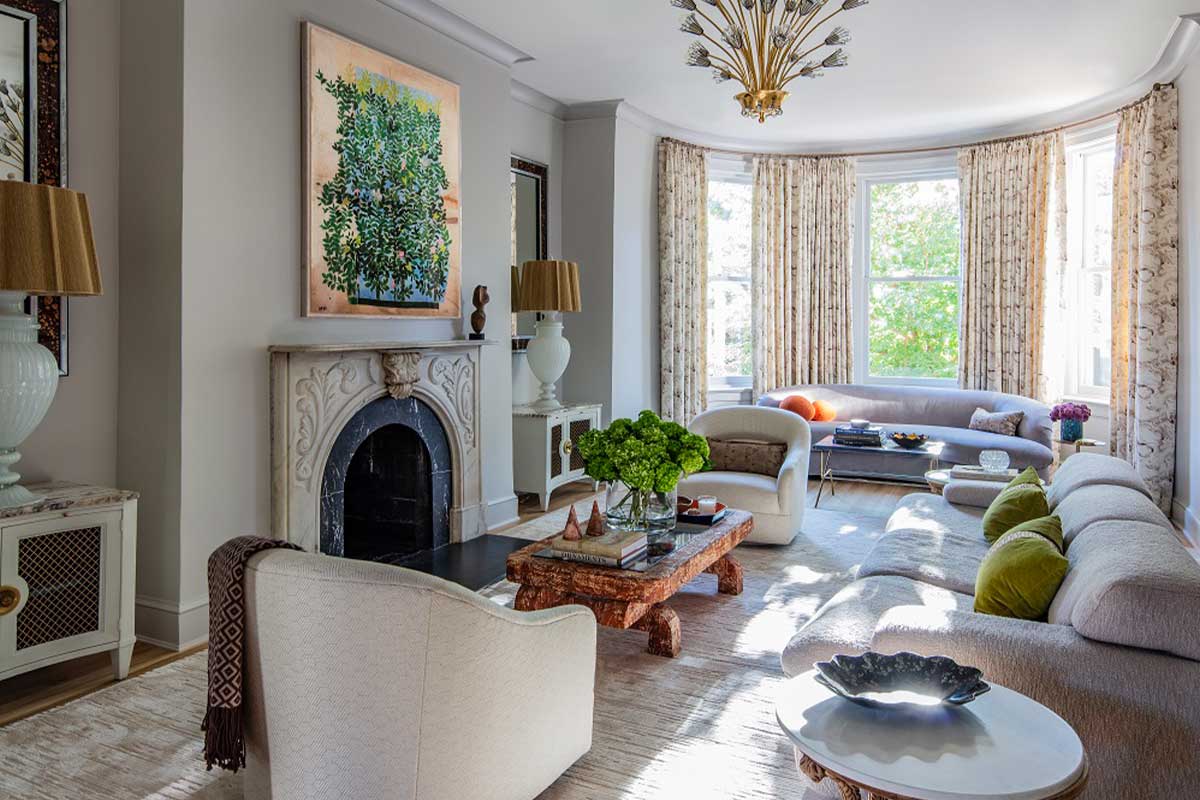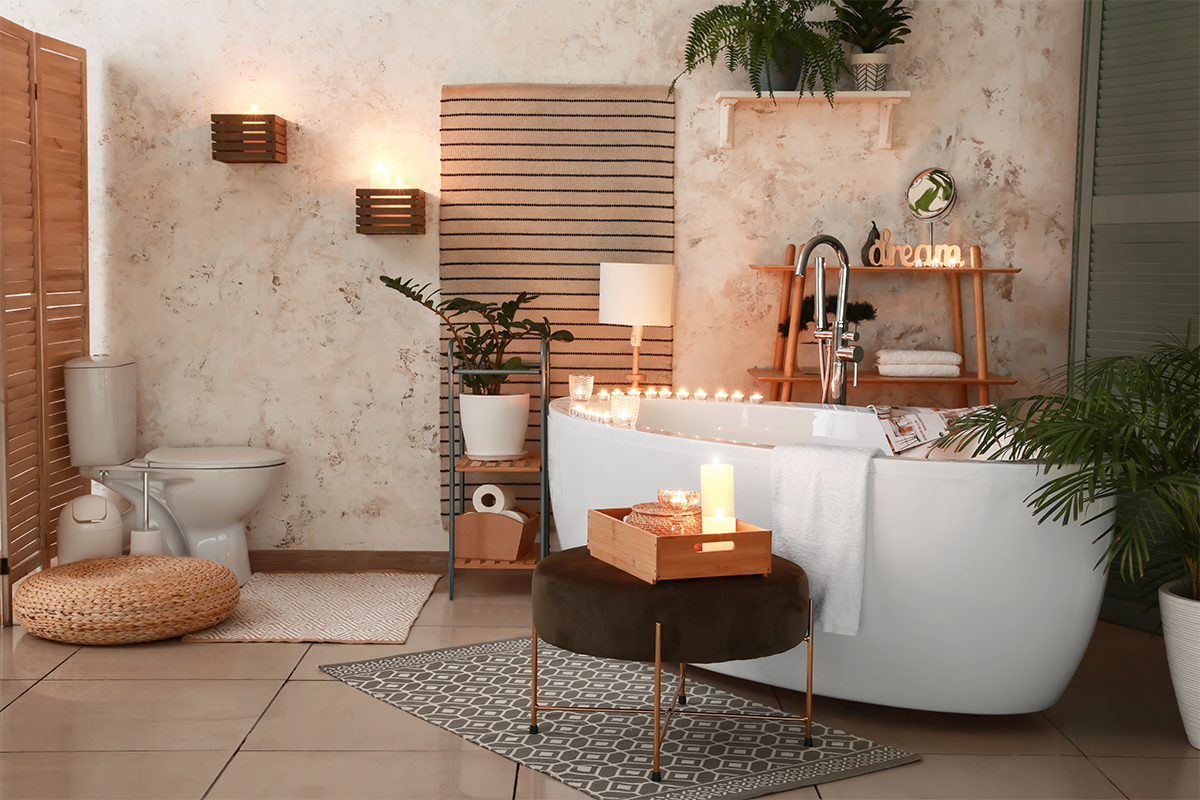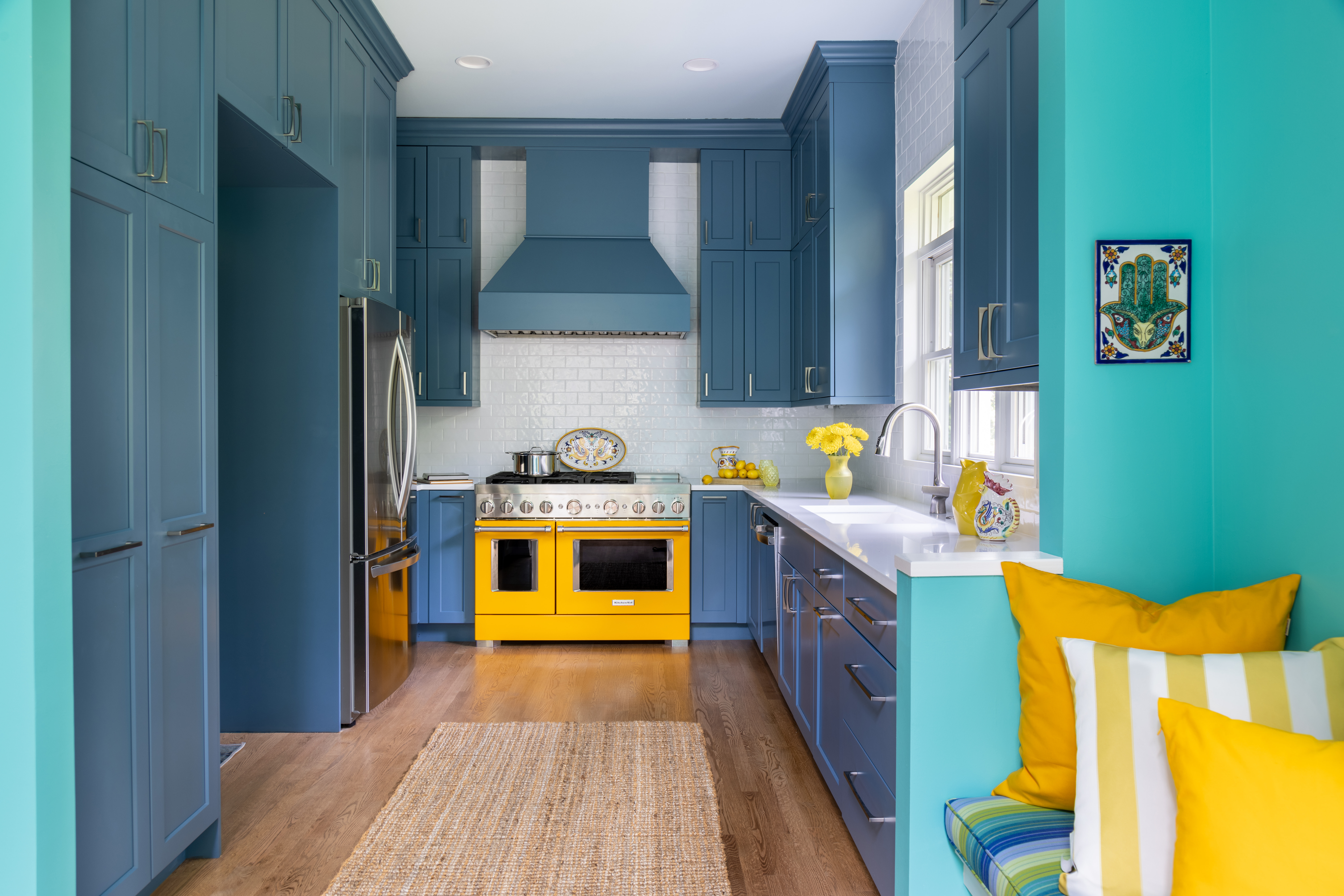We’re just over halfway through 2020, and if you’ve been working from home, there’s a good chance you’ve been doing so for nearly four months, and could be for the rest of the year or beyond.
That’s quite a lot more time than you’ve been spent at home in years past, and with the potential to work from home full-time or more often in the future, you might be wondering, “How can I make my space comfortable, stylish and efficient while working from home?”
We caught up with Arlington-based interior designer Rebecca Quandt to discuss how working from home is affecting interior design, and how you can make the most of your space, even on a budget. Find our conversation, below.
As an Arlington-based interior designer that serves the DMV, what services do you offer and how has COVID-19 impacted your day-to-day schedule?
I specialize in residential interior design and am a full-service interior designer, and my bread and butter is kitchen and bathroom renovations. But lately, I have been doing a lot of furnishings, as well as hourly consultations, small projects and more. The scope of it all kind of runs the gamut. And even before COVID-19, I had experience with virtual design from years ago, which I strayed away from for several years, simply because I got so busy with local projects. But now, once COVID-19 hit, it was just a matter of dusting off the old questionnaires and instructions for clients to measure their homes, and getting back to re-providing those services.
Of course, there was a little bit of time to transition and kind of bring all of that previous information up to date, as well as add in some of the newer services I provide. But before COVID-19 happened, I had a six-month waiting list, which pretty much evaporated overnight. Obviously my construction projects were immediately put on hold, and so I started reaching out to the people on my waiting list to say, “Hey, in the meantime because I have more time not going to construction management, I could move you up in the queue and start your design work.” But across the board nearly everybody said, “Our financial situations have changed and we can’t move forward with the project at this time.”
That was a little bit scary, especially because my husband is in law school and I’m the sole provider. And I had this moment of, “Oh, what am I going to do?” It took a few weeks of revamping and really diving deep, but all of a sudden at the beginning of May, my phone started to ring for virtual design projects, and now I have back-to-back meetings again.
Now that people are reaching back out for interior design work, what are their inspirations and alternative ideas like after spending more time at home?
I think people have been in their homes long enough that they’re starting to get a little stir-crazy. Especially for really busy professionals who don’t spend a lot of time at home, who don’t normally have the time to tackle the projects that maybe they’ve wanted to do for years or have been thinking about doing, now since people have been home, they have a little bit more flexibility to explore doing those projects. And now that the initial financial scare has kind of gone away, where at least companies have mostly come around with whatever their pay cuts are going to be or what their budgets are, there are people who are ready to move forward.
I’ve also had clients who decided to pause their construction projects and now are calling me to say, “Actually, instead of our bathroom renovation, we really need you to come and help us figure out how my husband and I can both have permanent work spaces at home, and we’ve got limited space, so what can we do?” So some of the projects that I have been working on have kind of been redirected in that sense.
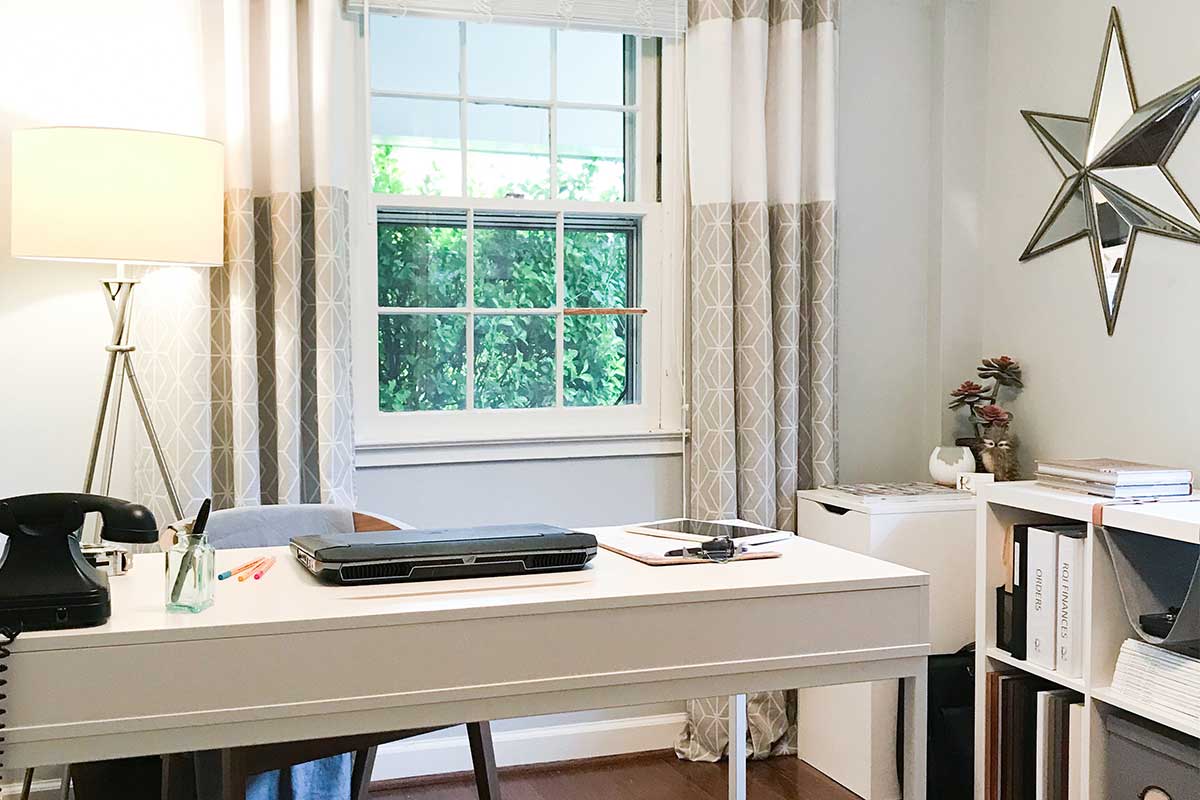
Speaking of working from home, how have you adapted yourself?
I’ve actually always worked from home, so for me there wasn’t much of a transition this time. It’s more of a transition that my husband is home with me, so I set up his own workspace, and I have a separate room in our house that is designated as my office.
The one thing that’s particularly difficult for me working from home is I don’t have the space to have a huge sample library. Typically I rely heavily on going to showrooms, checking out samples and then showing them to clients. And then I take them back to the showroom once I’m done, simply because I don’t have the space to keep them at home like I would if I rented a space elsewhere. But the change has mostly been adapting, such as making an appointment to pick up samples from the showrooms, dropping samples off to my clients and doing video calls to chat about the samples, as opposed to me doing that in their home. One of the best things has been that I offer 3D models and renderings, which has been so pivotal with COVID-19. Instead of having all of these long conversations or being able to walk somebody through their space, I can use technology to visually show my clients what their room and space plans will look like in 3D, including fabrics, materials, countertops of whatever. So even though it’s not yet in the actual space, it allows me to give them a photo-realistic picture from any angle of what the space is going to look like. That has been hugely helpful.
That’s mostly how things have changed for me, but the other problem is supply is low at this point (for everything from fabric samples to furniture). Sometimes clients wait for weeks to get their samples and orders, and I had one client who waited four weeks to get a lamp.Everything has taken a new level of patience. You have to make those extra phone calls to make sure what you are ordering is in stock, because if not, you have to re-select because things are just taking too long. For example, desks are hard to come across. I’ve been on NextDoor, Craigslist, Facebook Marketplace, and they’re gone. Lately I’ve started ordering compact-space dining tables to use for desks. When you know the ins and outs of the industry and what’s available, you can get a little creative in how you specify things or how you build things.
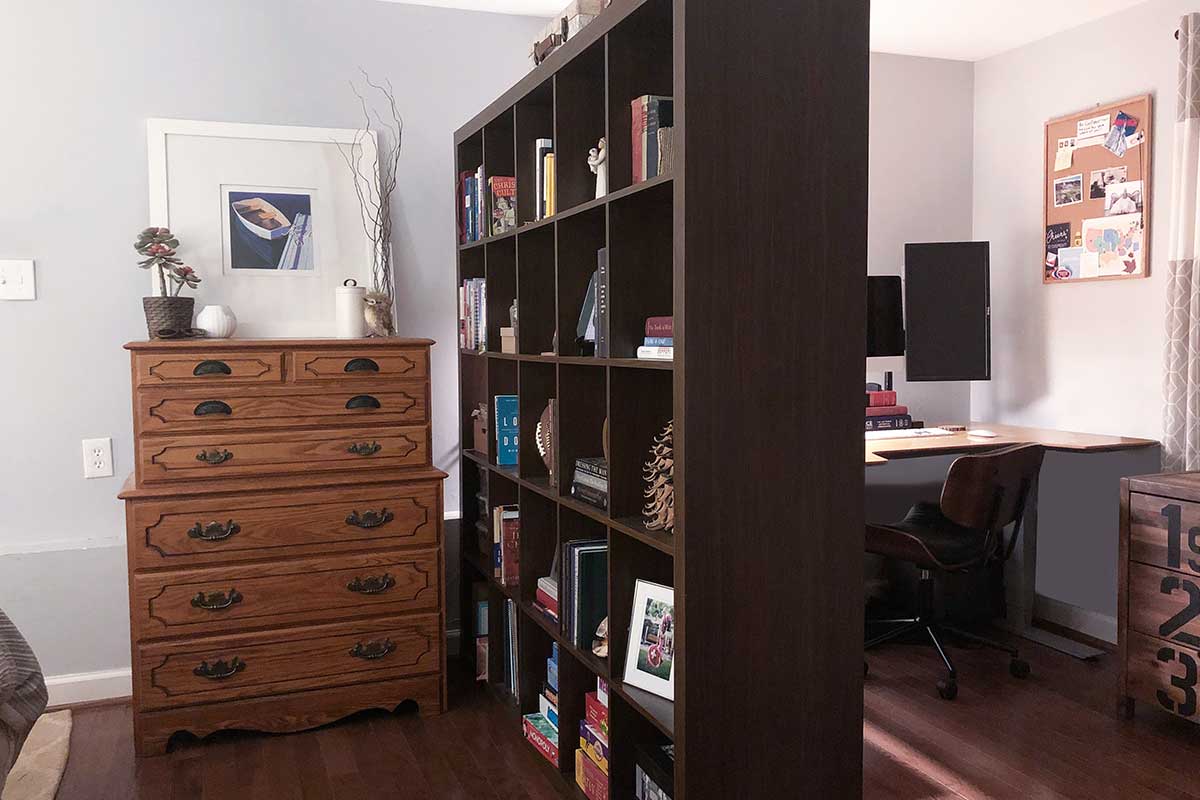
What advice do you have for those who are trying to make a more permanent work-from-home space now?
Your work space needs to be functional, but if you’re going to invest in a piece of furniture, it’s nice to invest in something that either you can use long-term, or that could be repurposed after you’re done using it. I think one of the main challenges, especially for people with kids at home, is finding the space to work and have a designated space. I recommend people using their guest bedrooms, if they have one, or finding a nook in your living room. Create a space that somehow, at the end of the day, you can leave it and not be living in your work. Because as someone who has worked from home for the past five or six years, it’s really hard to work in a space that you live in, and it can feel like you can’t relax.
Create a space that is for productivity, but also one that allows you the relaxation to get away from it. I also highly suggest a temporary work space where you can work outside. There’s enough stress in the world and if you can find a way to work from the outdoors, if it’s a balcony or porch or backyard, then do that for a couple hours out of the day and actually take advantage of being able to go outside, because when things go back to normal and you have to be in the office all day, you won’t be able to take advantage of that.
Before
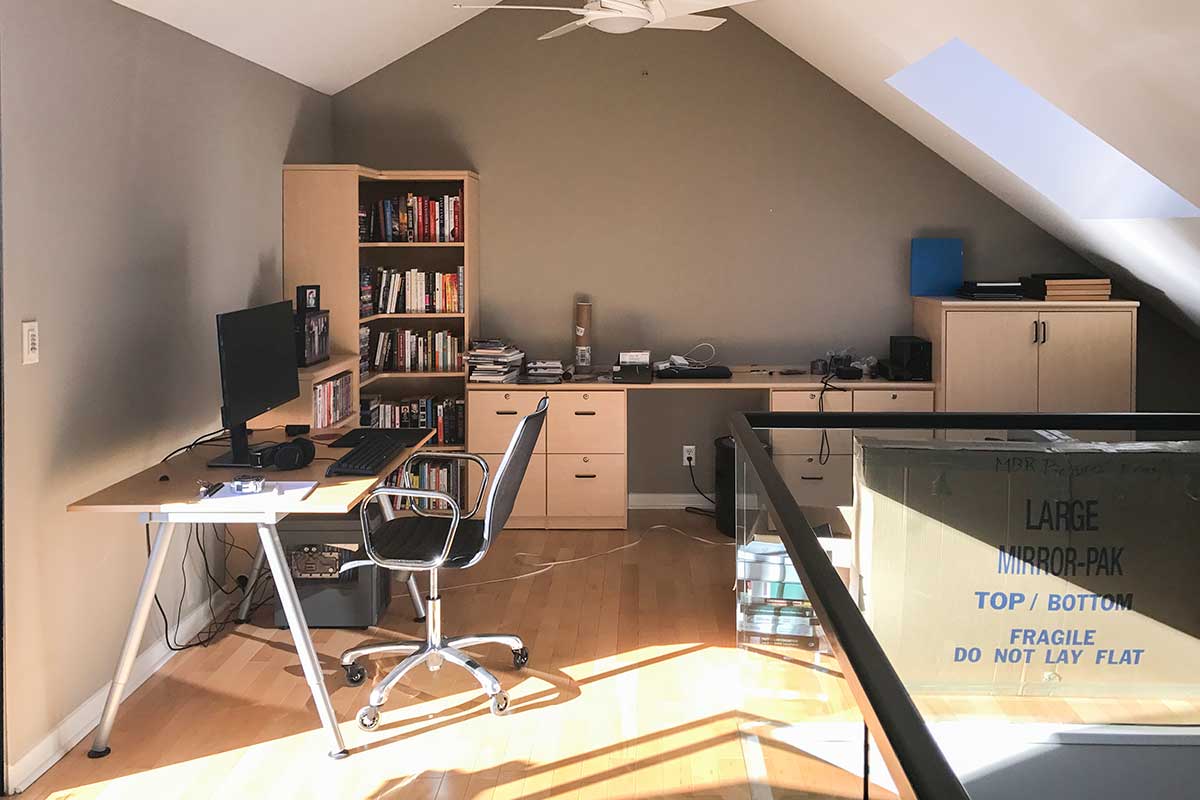
After
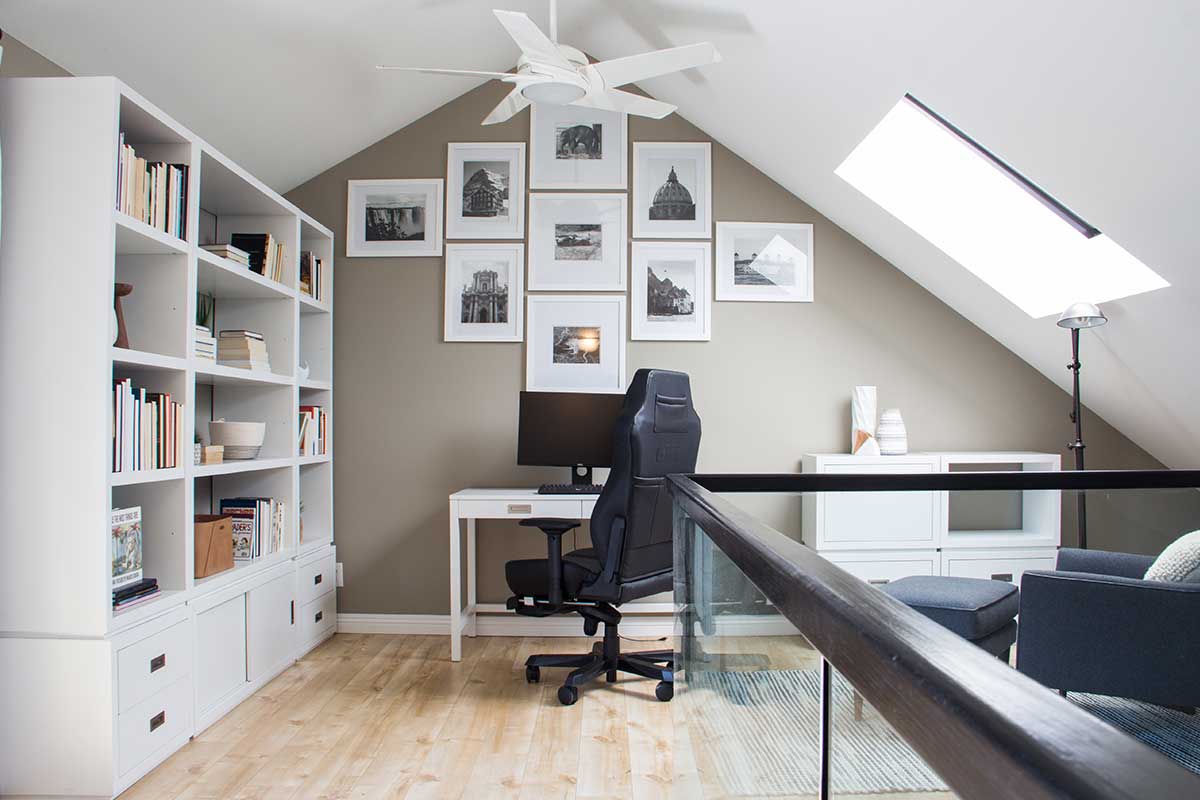
What long-lasting changes do you think COVID-19 will have on interior design?
There are definitely a few things. As far as how interior designers work, I think all interior designers need to create more meetings through virtual and get in with the digital. These things, such as 3D modeling, are becoming more and more needed. I also think the standard design packages that older designers offer (I say older designers because they come from a different generation of how interior design was done) where they for example would have tiered projects, priced accordingly. I don’t think that’s really going to work anymore. I think every project needs to be approached differently, and the scopes are changing so much from project to project that no two contracts look the same, and the contents are wildly different.
And overall just patience. I think I’ve had to do a lot of educating people in this time, managing expectations appropriately and also explaining the why behind what the timeline might be so that people can understand. A kitchen can’t be completed in a month. And once people understand the design process, it’s easier. Plus, with the repercussions of COVID-19 and the change in the supply chain, things are going to get stuck, even if a member of the construction team comes down with COVID-19 and the site has to shut down for at least two weeks to be safe. Everybody just needs to be flexible at this time and moving forward, and hopefully, no one gets angry at me!
For more features on local interior designers, subscribe to our weekly Home newsletter.


